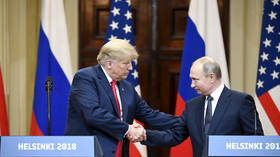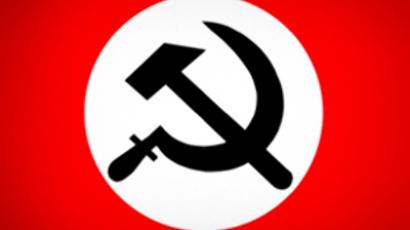Lithuanian court defines swastika as “historical legacy,” not Nazi symbol
A court in the Lithuanian city of Klaipeda has ruled in favor of four men who displayed swastikas at the national independence parade, stating the image is part of the country’s historical legacy and not a Nazi symbol.
Ending the three-month case, the court justified its decision by citing the fact that a swastika is a centuries-old symbol representing the sun and found on numerous historic artifacts.
The event’s organizer, Milvidas Ushanuskas, said he just “wanted people to think outside the box.”“That’s why I decided to look for a symbol which would urge them to do so,” he said. “And I chose the ancient swastika – a symbol of light, fire and universe – as a perfect match. The swastika, once a sacred symbol, is now being misinterpreted and humiliated,” he believes.
Alekseus Lukhtanas, professor of archeology from Vilnius, confirmed this: the swastika was indeed an ancient symbol of fire and sun in places including China and Europe, even appearing on the first Soviet banknotes.
“I have come across swastikas a lot in decades of archeological research. They can be found as decorations for ancient wallets, on clay pots and hats. And they are thousands of years old,” Professor Lukhtanas said.
Regardless, he is opposed to the marchers’ revival of the symbol, notorious as the emblem of the Nazis. He questions their motivation in choosing a motif burned into the public’s as a symbol of extermination and hatred, rather than some other icon of centuries past.
“One thing is an ancient symbol of fire and prosperity. The other is when someone tries to use it for whatever their motivation is. I don’t believe they did it for archeological purposes. It was a very bad promotion. If they did, why wouldn’t they promote any other archeological findings on banners?”
At first the Lithuanian authorities thought the same way as Lukhtanas. The students were originally arrested and put on trial for the illegal display of fascist symbols. Yet in a court decision which shocked many: they were acquitted. The judge saw no malicious intent in their actions – believing their story that they were promoting a historical symbol.
Political activist Algerdas Paletskis, leader of the Frontas movement, says it is an extremely sinister and dangerous development for his country.
“We see in Lithuania the process of rehabilitation of Nazi collaborators. We see that people who fought against the Red Army – Lithuanians fighting on Hitler’s side – are being rehabilitated. So this court decision legalizes the proliferation of swastika,” Paletskis says. “In Lithuania swastikas can now be drawn by any artist and they will be in a position to say that it is legal by the court.”
In Lithuania, the display of both Nazi and Soviet symbols is outlawed. Many are wondering if the court’s verdict may open a way for neo-Nazis to use history as a cover-up for fascist demonstrations.













